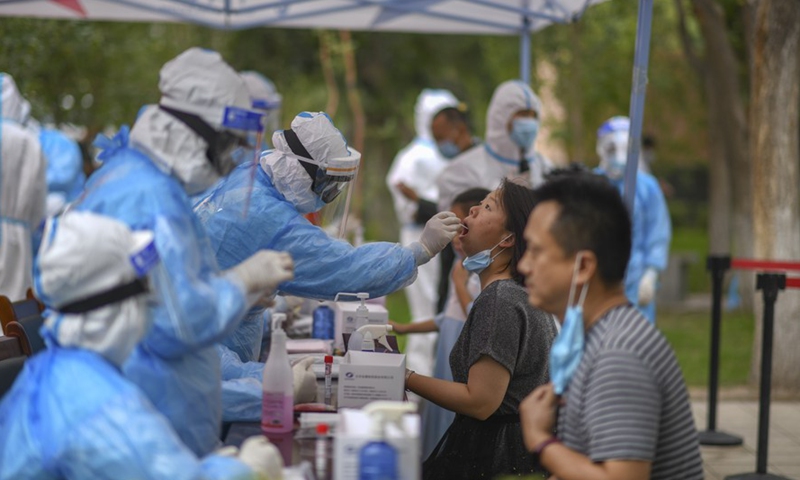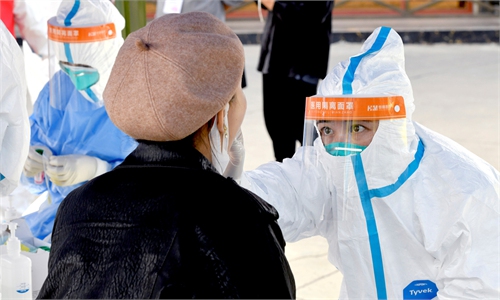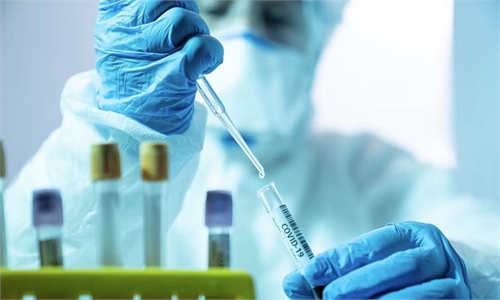Urumqi enforces 'static management' in parts of city to stem new wave of coronavirus resurgence

Medical workers collect swab samples for residents at Tianshan District in Urumqi, northwest China's Xinjiang Uygur Autonomous Region. Urumqi is carrying out free nucleic acid tests for all residents and people who are visiting the city, in a bid to screen for novel coronavirus infections and reduce the risk of the epidemic spread.Photo:Xinhua
Urumqi, capital city of Northwest China's Xinjiang Uygur Autonomous Region, will partially suspend public transportation and close off residential communities for five days starting from Wednesday as the city registered 27 positive COVID-19 cases.
A notice released on Wednesday midnight by the city's anti-epidemic command center said six urban compounds of Urumqi will impose a temporary "static management". During the five-day period, residents are required to work from home and stay indoors, with shops and other public venues shut down temporarily.
Residents are encouraged not to leave the city but for those who do need to leave, they should hold a negative nucleic acid result taken within 24 hours and green health code, the notice said.
Xinjiang's daily COVID-19 caseload on Tuesday was 122, bring total cases there to 536 as of press time. Since the first case was found on July 30, 11 prefectures in the Xinjiang region have reported sporadic cases. Among them, 27 cases are scattered across four districts of Urumqi. Ili Kazak Autonomous Prefecture reported 78 cases, the highest number of cases in Xinjiang.
Xinjiang is still facing the challenge as rising cases were detected, which indicates that the transmission chain has yet to be cut off, Zhang Yuexin, a medical expert specializing in epidemic prevention and control, told the Global Times on Tuesday.
At a night time visual conference on Tuesday, Ma Xingrui, the Party chief of Xinjiang and head of the regional anti-coronavirus command center, stressed the necessity to study the epidemic situation and contain the flare-up quickly.
Ma underlined not to take one-size-fits-all approach in COVID-19 handling, but deal with the epidemic with precise and scientific measures.Tourists in Xinjiang need to be taken care of properly, Ma noted.
Xinjiang region is currently at the peak of annual travel season. Since the current wave of epidemic flare-up, the region has received 8.82 million tourists from July 30 to August 7, and measures will be taken to protect their interests, according to local authorities.
Local center for disease control and prevention found that the virus genome sequences collected among local cases was of a different variant from the Omicron BA.5.2 in the domestic coronavirus gene sequence database, so it can be concluded that the virus was probably imported from abroad.
Zhang revealed that the latest wave of Xinjiang's outbreak may stem from imported goods in Ili Kazak Autonomous Prefecture.
Global Times


